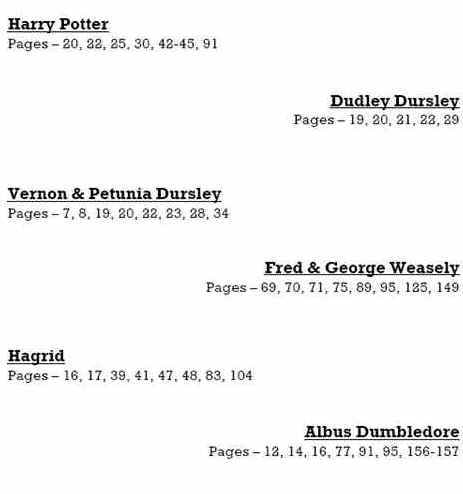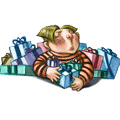| |
|
| |
  |
| |
|
|

1) It is time to board the Hogwarts Express. Describe what it was like
to enter Platform 9-3/4.
Use some of these
words to make your descriptions fun to
write and more interesting to read.

http://www.geocities.com/hogwarts_online_school/herb_fungi.html
|
|
2)
You are on the Hogwarts Express and the goodie cart has just stopped at
your compartment. Which treat would you like to buy? There are Chocolate
Frogs, Bernie Bott Every Flavor Beans, Licorice Wands, Droobls Best
Blowing Gum, Caldron Cakes, Pumpkin Pasties, Cockroach Clusters,
Levitating Sherbet Balls, Ice Mice, Pepper Imps, and Jelly Slugs. Now make up a new treat, and describe what happens when you eat it.
 |
3) The conductor of Hogwarts Express has
just stopped by your compartment and introduced himself.
Describe the conductor and your conversation. First
revise how to create an interesting character, see below * |
4)
You just entered a compartment on the Hogwarts Express and there are two
other students there that you have never met. Who are they? Where are
they from? Are their parents Muggles or Wizards? Describe what they look
like and their personalities.
|
|
http://www.classbrain.com/artmovies/publish/article_225.shtml
|
* How to create an interesting
character ..... as easy as a) , b), c) !
.
a) Remember when introducing a character, mention
some of his/her physical characteristics, not too many, just two or
three. You might mention something else later.
.
b) Describe any
mannerism or behaviour the person has that is typical of that
person.
.
c) Show the character's personality or character by describing
a brief incident- how they treat other people, or how they react
when something is said or done.
.
Discuss in class what could be examples of these above
three elements.
|
|
|
|

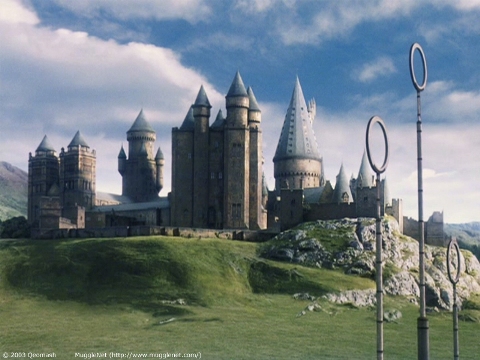
. Draw and fill in this
chart in your book, and then complete it.
|
|
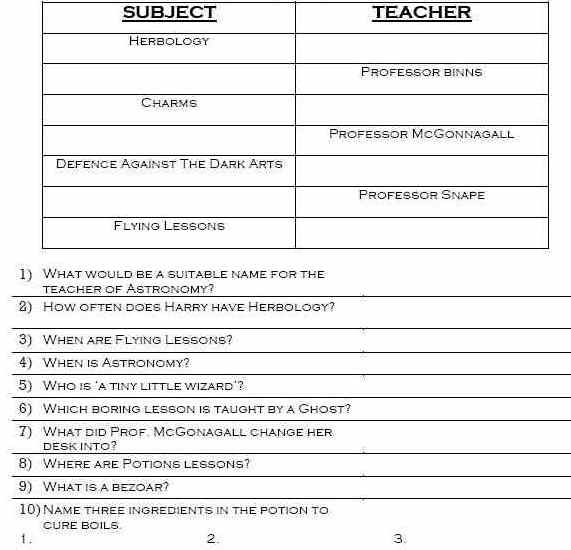
11)
In one paragraph describe the main setting of the novel.
|
 J.K.Rowling J.K.Rowling
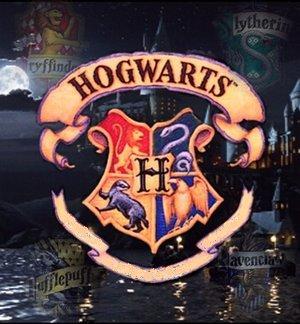
|
| |
|
.



Characters (and real-life people) each
have their own personality traits.
Think about which of the following
character traits listed below, you could use to describe
yourself?
Use the words from these lists when writing
about the different characters you've read about in Harry
Potter.
1) Find on
the Internet or draw a picture of one character from Harry Potter,
and paste it in the middle of a new page.
(Pick a different character to the ones listed in Part G. below)
2) Then
around the picture write all of the words that describe this
character.
3) Also
write out some dialogue from the book that shows the personality of
your character.
Don't stop with these lists though; can you
think of more terms to describe your characters?
http://www.teachervision.fen.com/writing/resource/2669.html
|
|

A character map shows the relationships between the
different characters in a novel.
1) Make a Google 'image' search with the words 'character map', and
look at the different examples of character maps you can find
on the
Internet.
2) On a double page (or an A3 size piece of paper) design your own
character map for the book 'Harry Potter and the Philosophers Stone'.
Start by writing Harry Potter in the middle of the double page. Then draw
arrows to all of the different characters with which he is related or
connected in some way. Along the lines joining different characters, write
the connection, with such relationship words like: Friend, guardian,
father, teacher, fellow student, teacher, son, sister.....
(You could use MS Word and the 'Autoshapes', or if you are designing your
character map in you book, use a pencil so you can make corrections as you
go.)
|
|

|
|

|
Revise the monsters mentioned in the book, and read about the
creatures listed at this site:
http://www.geocities.com/hogwarts_online_school/monster.html
1)
Invent your own monster or creature. Describe such things as its
size and appearance,
where it lives and what it eats, how it behaves and any special
powers it might have.
2) Then draw and colour a picture of your monster or creature.
|
|
| |
| |
|

|
|
1)
Diaries : Imagine
you are a new student at Hogwarts – write a series of diary
entries about your first days or weeks at your strange new
school. OR Write diary entries for some of the other characters. You
could choose Harry or Ron or Draco Malfoy, Dumledore or Snape for
more of a challenge.
2)
The Daily Prophet:
Write a story suitable for inclusion in the best-selling Wizard
newspaper, “The Daily Prophet”. Google an ‘image’ search
with the words ‘The Daily Prophet’, to get some ideas on how to
present the article. Include an illustration.
3)
Play-scripts:
Take an episode from the novel and dramatise it in the form of a
short play-script. (Optional: Perform it with some friends to your
class, or record it as a radio play with sound effects.)
4)
Illustration: The novel has been published
with nearly twenty different covers so far.
Design a new cover for a
new edition of the text. Open this site to see the earlier cover designs:
www.scholastic.com/harrypotter/
Also
write and design a new ‘blurb’ for he back cover as well.
|
|
Free resource from http://www.teachit.co.uk
© 2000 |
|
|
|

|
|
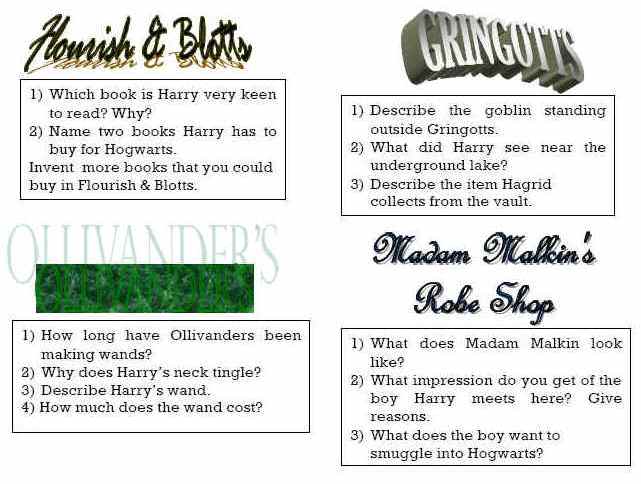 |
|


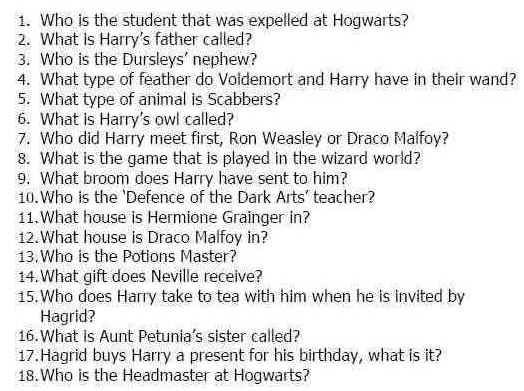
http://www.teachit.co.uk
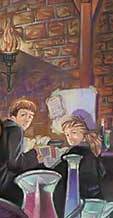 |

Review the herbs and potions used in the novel and the
potions listed on the following site:
Herbology Textbook)
Design your own potion. Make up the ingredients and instructions for how
to brew the potion.
What is your potion used for and how should it be
taken or applied?
|
|

 |
|
Design your own small handbook on how to play Quidditch. Include
illustrations. |
|
|
|
|
|
|
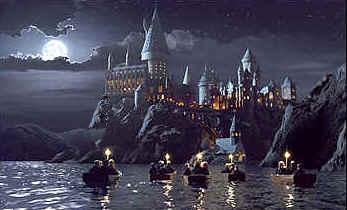

To really understand a character’s role in a story, it
helps to look at the
character from several angles. When you’re asked to
describe or analyse a
character, think SADDR,
which stands for a certain way of looking at a character.
Speech : What
does the character say? What does this tell you about the character?
For instance, Vernon Dursley “yelled at five people”
at work. This is a clue that he
can be unfriendly and that he doesn’t really care about
other people’s feelings. On
the other hand, Professor Dumbledore said many things that
showed he was kind
and understanding of different people. What are two
examples of things he said?
Dudley starts in Chapter One with prodding and poking at
Harry. What are two
other things he does that show what kind of person he is?
Action: What
does the character do? What does this tell you about the character?
For instance, Hagrid brings Harry to Professor Dumbledore
on a flying
motorcycle. This is a clue that he is a little bit wild.
Description : What
does the author say about the character? What does that description
tell you about the character?
Example: Albus
Dumbledore is described as “tall, thin and very old.” He also
rummages through his cloak and laughs softly when he sees
the cat (who is
Professor McGonagall). This tells you that he has a sense
of humour and might be
a bit absent-minded.
Your turn: Professor
McGonagall is described rather differently, as a “rather severe-looking woman” whose “black hair was drawn into
a tight bun,” who Albus Dumbledore thought sat “so stiffly.” What kind
of teacher do you think she would be?
Drawing : Imagine
what the character looks like and make a sketch of it. Professor
McGonagall’s neat hair and trim appearance are clues
that she is a fastidious, neat and organized person. What does Albus Dumbledore’s
appearance tell you about his character?
Reactions of others :
How do other characters in the
story react to this character?
For instance, Professor McGonagall asks Albus Dumbledore a
lot of questions about what has happened. She clearly thinks he knows a lot, and
when Professor Dumbledore asks her to, she uses Voldemort's name, even
though she doesn't really want to, showing that Professor Dumbledore is a
well-respected person. How does Professor McGonagall react to
Hagrid? What does this tell you about
him?
Apply the SADDR
method of character analysis to
Hermione.
From: http://www.resourceroom.net/comprehension/literature/Harrypottercomp.asp
|
|


Right mouse click this puzzle and copy and paste it onto a Word
document. Then print it out so you can fill in the answers.
Then paste the completed puzzle in your book.
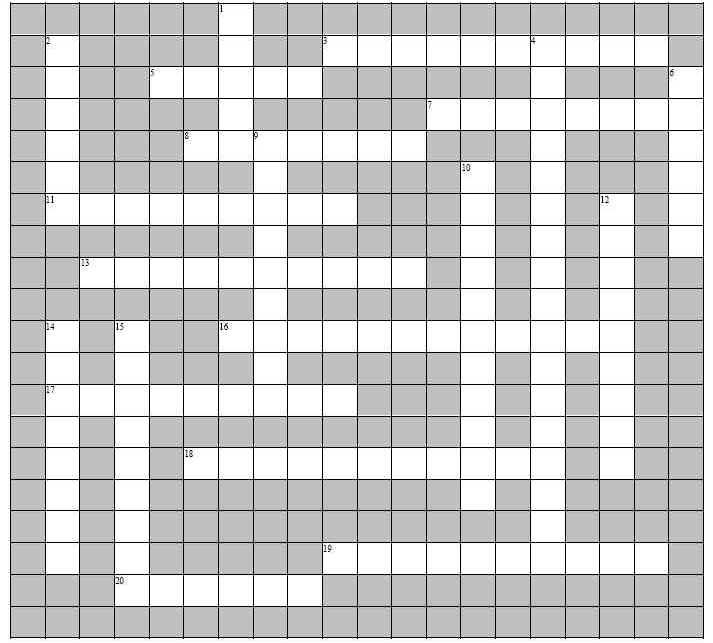
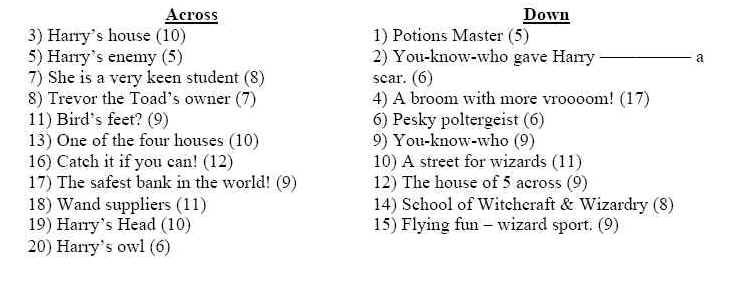
|
|

|
|
Complete this on-line
quiz. Record in your book the level you selected and how long it
took you to complete it.
http://www.factmonster.com/quizzes/hogwarts2/1.html
|
|
|
|
  
To understand things around us, it helps to think
about how they are alike, and how they are different. This is called
“comparing and contrasting.” One way to
show this visually is with a chart which shows how two things “have
some things in common”— they
share some characteristics or ways they are alike — but
also have differences.
Examples:
Snape and McGonagall
Gryffindor and Slytherin
Peeves and Nearly Headless Nick
History of Magic class and Potions class
Select one of the above pairs. After thinking about
their similarities and differences, on a new page make a Venn
diagram, where two circles overlap. The similarities are listed in
the overlapping section, while the
differences are written in the outside parts. This type
of diagram is a simple visual way of showing their relationship.
http://www.resourceroom.net/Comprehension/literature/HPCompendium/simndif.pdf
 |

|
1)
List the
changes to the plot of Harry Potter from the novel to the film
.
2)
Explain why the omissions (bits left out) and changes might
have were made
.
3) Name the above three actors, and discuss how
suitable you think their choice was for
playing the three main roles in the Movie
'Harry Potter and the Philosopher's Stone'.
|
 |
|
|
 www.interactive-learning.com.au www.interactive-learning.com.au
|



 J.K.Rowling
J.K.Rowling













